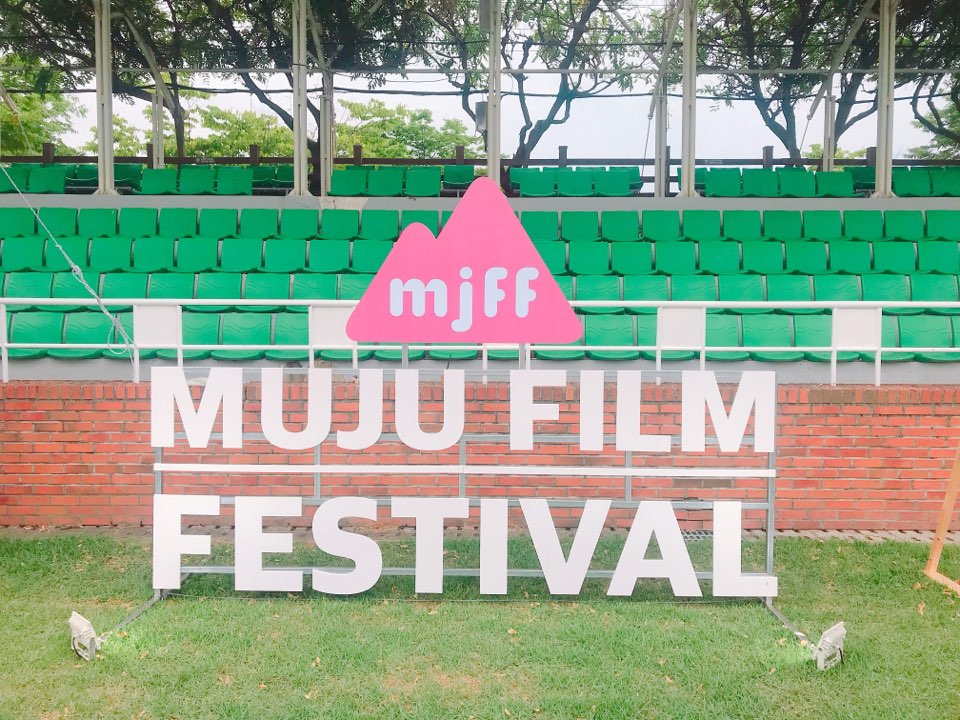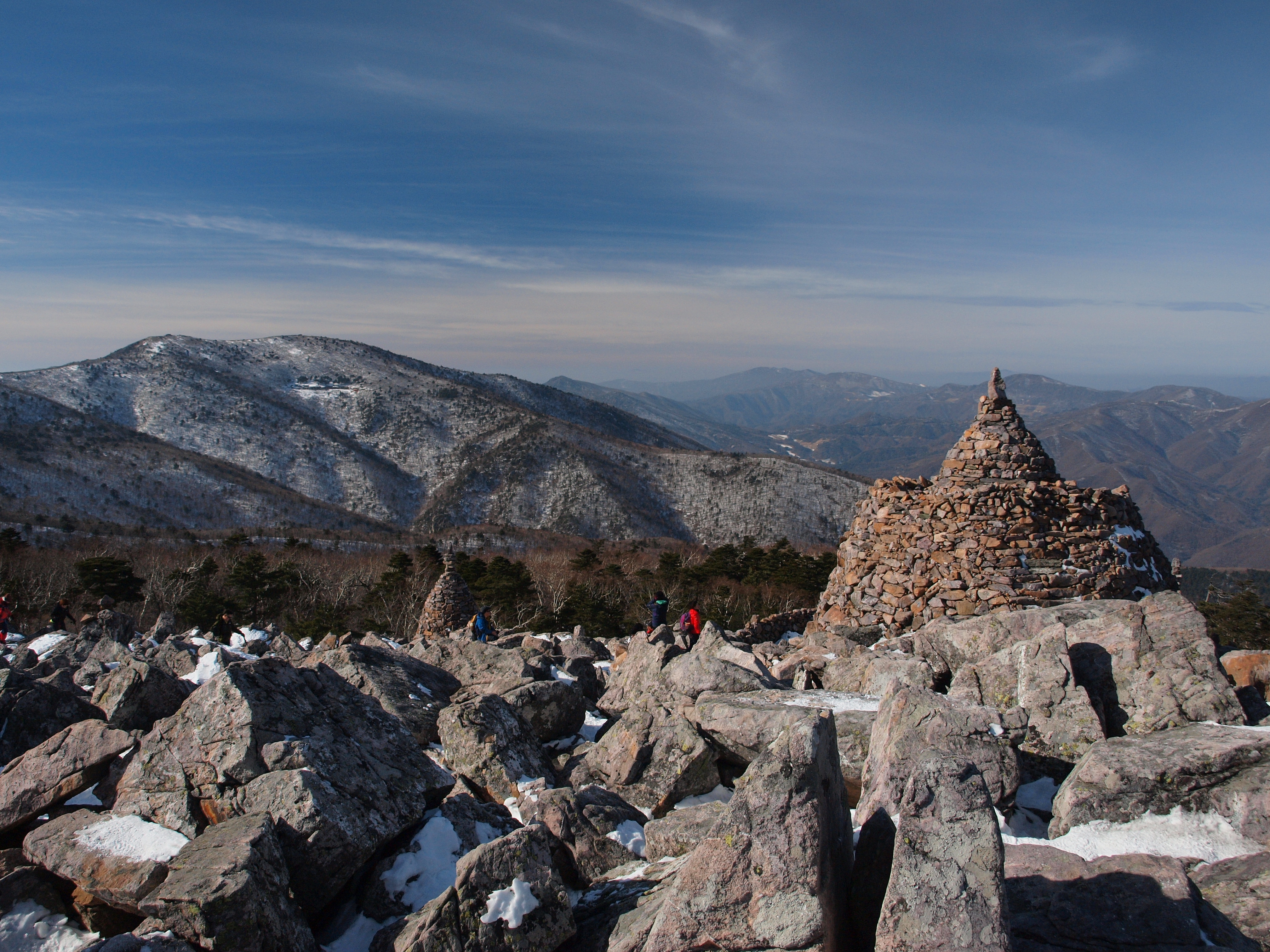|
Deogyusan National Park
Deogyusan National Park ( ko, 덕유산국립공원, 德裕山國立公園) is located in the provinces of Jeollabuk-do and Gyeongsangnam-do, South Korea. It was designated as the 10th national park in 1975. The park is home to a total of 1,067 plant species, 32 mammal species, 130 bird species, 9 amphibian species, 13 reptile species, 28 fish species, and 1,337 insect species. Endangered animals in the park include Flying squirrel, Marten and Otter. See also *Deogyusan References External linksThe park's page on Korea National Park Service's website National parks of South Korea Protected areas established in 1984 Parks in North Jeolla Province Parks in South Gyeongsang Province {{Protected-area-stub ... [...More Info...] [...Related Items...] OR: [Wikipedia] [Google] [Baidu] |
Deogyusan
Deogyusan, formerly spelled Togyusan, is a mountain in South Korea. Its highest peak is 1,614 meters above sea level. Geography Deogyusan stands on the border of Jeollabuk-do and Gyeongsangnam-do, covering portions of Muju County, Muju and Jangsu Counties in Jeollabuk-do and Geochang and Hamyang Counties in Gyeongsangnam-do.An 2003, p.111. Deogyusan stands on the Baekdudaegan, the mountainous spine of the Korean Peninsula. It is composed of numerous ridges which rise to various local peaks; the highest (by which the mountain's elevation is measured) is ''Hyangjeokbong''. Attractions Deogyusan is the cornerstone of Deogyusan National Park, established 1975. The attractions of the park include the Chiryeon Waterfall and Cheoksan mountain fortress. It is also famous for the winter ski resort of Muju Resort, Muju. Animal and plant life Approximately 250 animal species and 600 plant species are found in the Deogyusan area. An Amur Leopard was shot on Deogyusan in 1960, a few y ... [...More Info...] [...Related Items...] OR: [Wikipedia] [Google] [Baidu] |
Jeollabuk-do
North Jeolla Province (; ''Jeollabuk-do''), also known as Jeonbuk, is a province of South Korea. North Jeolla has a population of 1,869,711 (2015) and has a geographic area of 8,067 km2 (3,115 sq mi) located in the Honam region in the southwest of the Korean Peninsula. North Jeolla borders the provinces of South Jeolla to the south, North Gyeongsang and South Gyeongsang to the east, North Chungcheong to the northeast, and South Chungcheong to the north. Jeonju is the capital and largest city of North Jeolla, with other major cities including Iksan, Gunsan, and Jeongeup. North Jeolla was established in 1896 from the province of Jeolla, one of the Eight Provinces of Korea, consisting of the northern half of its mainland territory. History During the Proto-Three Kingdoms period, Jeolla region was the center of the Mahan confederacy among Samhan. There were 15 tribal countries out of 54 in the region. During the period of the Three States, this region came to belong to Baekje w ... [...More Info...] [...Related Items...] OR: [Wikipedia] [Google] [Baidu] |
Gyeongsangnam-do
South Gyeongsang Province ( ko, 경상남도, translit=Gyeongsangnam-do, ) is a province in the southeast of South Korea. The provincial capital is at Changwon. It is adjacent to the major metropolitan center and port of Busan. The UNESCO World Heritage Site Haeinsa, a Buddhist temple that houses the ''Tripitaka Koreana'' and tourist attraction, is located in this province. Automobile and petrochemical factories are largely concentrated along the southern part of the province, extending from Ulsan through Busan, Changwon, and Jinju. Etymology The name derives ; . The name derives from the names of the principal cities of Gyeongju () and Sangju (). History Before 1895, the area corresponding to modern-day South Gyeongsang Province was part of Gyeongsang Province, one of the Eight Provinces of Korea during the Joseon dynastic kingdom. In 1895, southern Gyeongsang was replaced by the districts of Jinju in the west and Dongnae (modern-day Busan) in the east. In 1896, they were me ... [...More Info...] [...Related Items...] OR: [Wikipedia] [Google] [Baidu] |
South Korea
South Korea, officially the Republic of Korea (ROK), is a country in East Asia, constituting the southern part of the Korea, Korean Peninsula and sharing a Korean Demilitarized Zone, land border with North Korea. Its western border is formed by the Yellow Sea, while its eastern border is defined by the Sea of Japan. South Korea claims to be the sole legitimate government of the entire peninsula and List of islands of South Korea, adjacent islands. It has a Demographics of South Korea, population of 51.75 million, of which roughly half live in the Seoul Capital Area, the List of metropolitan areas by population, fourth most populous metropolitan area in the world. Other major cities include Incheon, Busan, and Daegu. The Korean Peninsula was inhabited as early as the Lower Paleolithic period. Its Gojoseon, first kingdom was noted in Chinese records in the early 7th century BCE. Following the unification of the Three Kingdoms of Korea into Unified Silla, Silla and Balhae in the ... [...More Info...] [...Related Items...] OR: [Wikipedia] [Google] [Baidu] |
Muju County
Muju County (''Muju-gun''), is a county in North Jeolla Province (Jeollabuk-do), South Korea. Muju is known for its Muju Firefly Festival and is a tourist area. History During the era of the Three Kingdoms of Korea, Mupung (the present name) in Byeonjin belonged to Silla and was called ''Musanhyeon'', and Jugye area (current Muju-eup) in Mahan belonged to Baekje and was called ''Jeokcheonhyeon''. It is known that Musan was renamed as ''Mupung'' and Jeokcheon as ''Dancheon'' after the Era of Unified Silla (668~917). After Goryeo (918~1392) was founded, Mupung did not change its name whereas Dancheon was renamed as ''Jugye'', and as Joseon rearranged administrative districts in 1414 (the 14th year of Taejong), Mupung and Jugye were incorporated into one district. It was named as Muju through the combination of the first letters of the two areas, Mupung and Jugye, after they were incorporated into one administrative district. Geography Muju-gun is situated near four provinces, inc ... [...More Info...] [...Related Items...] OR: [Wikipedia] [Google] [Baidu] |
Flying Squirrel
Flying squirrels (scientifically known as Pteromyini or Petauristini) are a tribe of 50 species of squirrels in the family Sciuridae. Despite their name, they are not in fact capable of full flight in the same way as birds or bats, but they are able to glide from one tree to another with the aid of a patagium, a furred parachute-like skin membrane that stretches from wrist to ankle. Their long tails also provide stability as they glide. Anatomically they are very similar to other squirrels with a number of adaptations to suit their lifestyle; their limb bones are longer and their hand bones, foot bones, and distal vertebrae are shorter. Flying squirrels are able to steer and exert control over their glide path with their limbs and tail. Molecular studies have shown that flying squirrels are monophyletic and originated some 18–20 million years ago. The genus Paracitellus is the earliest lineage to the flying squirrel dating back to the late Oligocene era. Most are nocturnal ... [...More Info...] [...Related Items...] OR: [Wikipedia] [Google] [Baidu] |
Marten
A marten is a weasel-like mammal in the genus ''Martes'' within the subfamily Guloninae, in the family Mustelidae. They have bushy tails and large paws with partially retractile claws. The fur varies from yellowish to dark brown, depending on the species; it is valued by animal trappers for the fur trade. Martens are slender, agile animals, adapted to living in the taiga, which inhabit coniferous and northern deciduous forests across the Northern Hemisphere. Classification Results of DNA research indicate that the genus ''Martes'' is paraphyletic, with some studies placing ''Martes americana'' outside the genus and allying it with ''Eira'' and ''Gulo'', to form a new New World clade. The genus first evolved up to seven million years ago during the Miocene epoch. Fossils Several fossil martens have been described, including: *†''Martes campestris'' (Pliocene) *†''Martes wenzensis'' (Pliocene) *†''Martes vetus'' (Pleistocene) Another described fossil species, ''Martes n ... [...More Info...] [...Related Items...] OR: [Wikipedia] [Google] [Baidu] |
Otter
Otters are carnivorous mammals in the subfamily Lutrinae. The 13 extant otter species are all semiaquatic, aquatic, or marine, with diets based on fish and invertebrates. Lutrinae is a branch of the Mustelidae family, which also includes weasels, badgers, mink, and wolverines, among other animals. Etymology The word ''otter'' derives from the Old English word or . This, and cognate words in other Indo-European languages, ultimately stem from the Proto-Indo-European language root , which also gave rise to the English word "water". Terminology An otter's den is called a holt or couch. Male otters are called dogs or boars, females are called bitches or sows, and their offspring are called pups or cubs. The collective nouns for otters are bevy, family, lodge, romp (being descriptive of their often playful nature) or, when in water, raft. The feces of otters are typically identified by their distinctive aroma, the smell of which has been described as ranging from freshly ... [...More Info...] [...Related Items...] OR: [Wikipedia] [Google] [Baidu] |
National Parks Of South Korea
The national parks of South Korea are preserved parcels of public land on which most forms of development are prohibited. They cover a total of 6.6% of the country's area, and are typically located in mountainous or coastal regions. The country's largest mountain park is Jirisan National Park in the southwest; this was also the first national park to be designated in 1967. The largest marine park is Dadohaehaesang, with an area of more than , but almost all of this is water. The smallest park is Wolchulsan, with an area of only . As of 2016, there are 22 national parks in South Korea; the parks, with the exception of Hallasan National Park, are managed by the Korea National Park Service, established in 1987. The Authority operates its own police force, and since 1998 has been under the jurisdiction of the Ministry of Environment. It was previously under the jurisdiction of the Ministry of Construction. History Early on, admission to national parks in South Korea was free. In ... [...More Info...] [...Related Items...] OR: [Wikipedia] [Google] [Baidu] |
Protected Areas Established In 1984
Protection is any measure taken to guard a thing against damage caused by outside forces. Protection can be provided to physical objects, including organisms, to systems, and to intangible things like civil and political rights. Although the mechanisms for providing protection vary widely, the basic meaning of the term remains the same. This is illustrated by an explanation found in a manual on electrical wiring: Some kind of protection is a characteristic of all life, as living things have evolved at least some protective mechanisms to counter damaging environmental phenomena, such as ultraviolet light. Biological membranes such as bark on trees and skin on animals offer protection from various threats, with skin playing a key role in protecting organisms against pathogens and excessive water loss. Additional structures like scales and hair offer further protection from the elements and from predators, with some animals having features such as spines or camouflage servin ... [...More Info...] [...Related Items...] OR: [Wikipedia] [Google] [Baidu] |
Parks In North Jeolla Province
A park is an area of natural, semi-natural or planted space set aside for human enjoyment and recreation or for the protection of wildlife or natural habitats. Urban parks are green spaces set aside for recreation inside towns and cities. National parks and country parks are green spaces used for recreation in the countryside. State parks and provincial parks are administered by sub-national government states and agencies. Parks may consist of grassy areas, rocks, soil and trees, but may also contain buildings and other artifacts such as monuments, fountains or playground structures. Many parks have fields for playing sports such as baseball and football, and paved areas for games such as basketball. Many parks have trails for walking, biking and other activities. Some parks are built adjacent to bodies of water or watercourses and may comprise a beach or boat dock area. Urban parks often have benches for sitting and may contain picnic tables and barbecue grills. The largest ... [...More Info...] [...Related Items...] OR: [Wikipedia] [Google] [Baidu] |






